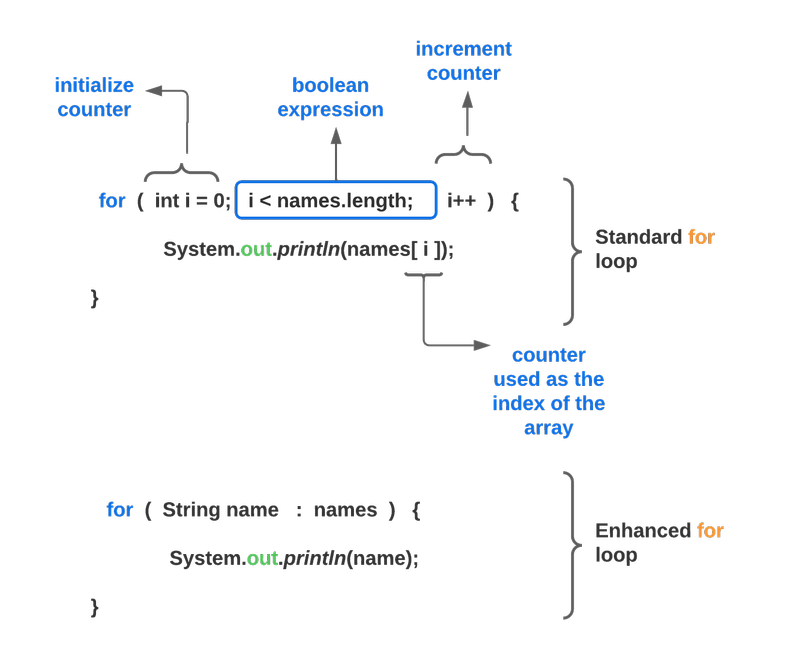IMPORTANT : The notes that I took for myself. I hope they will help you, too. Each resource that I used is added as reference at the end of the page.
Programming Style Series
- Programming Style Part 1 - Imperative and Declarative Style Programming
- Programming Style Part 2 - Higher Order Functions
Imperative Style Programming
According to the wiki definition, imperative programming style focuses on describing how a program operates. Actually it sounds good but not very descriptive. I have found a better one at a live event I attended via O’reilly.
According to Venkat Subramaniam, Imperative Style Programming tells us what a program does and also how it does it. I want to summarize this definition like Venkat did ->
What to do - How to do it
For instance;
1
2
3
4
5
6
String[] names = {"hasan", "tom", "phil", "bev", "mike"};
for (int i = 0; i < names.length; i++) {
if (names[i].equals("hasan")) {
System.out.println("it is found");
}
}
In the above example, we can easily understand what this code does.
What is it doing : it is trying to find a special name in the array.
How is it doing it? : it is doing it by using a standard for-loop. It defines a variable in the for-loop and does this by incrementing it one at a time and comparing it to the name it is looking for.
In summary, we show step by step the necessary actions (that is, how we do part) to find this name(that is, what we do part).
Note:
At the core of the familiar imperative style are mutability and command-driven programming. We create variables or objects and modify their state along the way. We also provide detailed commands or instructions to execute, such as create a loop index, increment its value, check if we reached the end, update the nth element of an array, and so on.
Declarative Style Programming
The declarative programming style focuses on what the program should accomplish without specifying all the details of how the program should achieve the result. Again according to Venkat;
It tells us what a program does but not how to do it. Again, I would like to summarize this definition like this ->
What to do - NOT How to do it
For instance;
1
2
3
4
List<String> listNames = Arrays.asList("hasan", "tom", "phil", "bev");
if (listNames.contains("hasan")) {
System.out.println("it is found");
}
What is it doing : well, it is trying to find a special name in the array like previous one.
NOT “how is it doing it” : The difference out of the imperative programming style, declarative style hides the details of “how to do” parts. As you can see, the contains method does the whole job for us and hides the complexity.
Comparison of enhanced and standard loops in terms of programming styles
In which classification should we evaluate enhanced and standard for loops? Let’s brainstorm together…
In both cases, it’s obvious what we’re going to do. Our goal is to print the elements of the array to the console. What about “how to do” parts???
In the standard for loop; A counter, i, is declared and initialized to 0. A boolean expression compares i with the length of the names array. if i<names.length, the code block is executed. i is incremented by one at the end of each code block. Within the code block, i is used as the array index. As you can see, We explain how to do it step by step.
In the enhanced for loop; A string variable, name, is declared to hold each element of the array. But we don’t know how this loop does all these operations.

Actually both the standard for loop (for i = 0...) and the enhanced for loop (for var x : ...) are imperative style. The enhanced for loop is actually a wrapper around
iterator.hasNext() and iterator.next(). That is, under the hood this form of iteration uses the Iterator interface and calls into its hasNext and next methods. Furthermore, from the enhanced for loop we can do break and continue with an if condition, and that is where we see the imperative nature being
enhanced clearly.
ENHANCED for loop is more declarative than the STANDARD for loop
We can say that the enhanced for loop moves the needle towards declarative style. However, it is not entirely in the land of declarative style. Both the standard loop and the enhanced loops are external iterators which are imperative in nature. In both loops, we control the flow using “if break” or “if continue”. We do a little bit less of the controlling in enhanced for loop compared to the standard for loop. Nevertheless both allow for imperative control.

